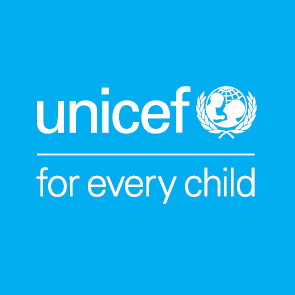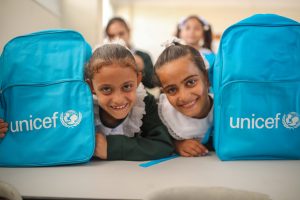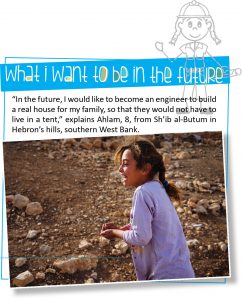 The year 2019 marks the 30th anniversary of the adoption of the Convention on the Rights of the Child (CRC). The CRC builds upon the Universal Declaration of Human Rights proclaimed in 1948, which states that fundamental human rights are to be universally protected;*1 it has been translated into over 500 languages, making it the most translated document in human history.*2 These human rights treaties lay out a framework for everyone to be entitled to rights and freedoms without discrimination due to race, gender, religion, national or social origin, or birth, among other factors. Once ratified at the national level, these human rights treaties become part of a country’s national legal system, and the state has an obligation to enact laws to ensure that these rights are upheld and enforced.
The year 2019 marks the 30th anniversary of the adoption of the Convention on the Rights of the Child (CRC). The CRC builds upon the Universal Declaration of Human Rights proclaimed in 1948, which states that fundamental human rights are to be universally protected;*1 it has been translated into over 500 languages, making it the most translated document in human history.*2 These human rights treaties lay out a framework for everyone to be entitled to rights and freedoms without discrimination due to race, gender, religion, national or social origin, or birth, among other factors. Once ratified at the national level, these human rights treaties become part of a country’s national legal system, and the state has an obligation to enact laws to ensure that these rights are upheld and enforced.
The CRC entered into force globally on November 20, 1989 and has since become the most widely ratified human rights treaty in history. The CRC codifies children’s rights, including the rights to life, survival, and development; freedom of expression; and protection from abuse and neglect. The Palestinian Authority ratified it in 2014, alongside six other global human rights treaties, including the Convention on the Rights of Women and the Convention on the Rights of Persons with Disability. The government of Israel ratified the CRC in 1991.

Children’s rights around the world
Globally, since the CRC was adopted in 1989, many children’s lives have improved. The number of children missing out on primary school has been reduced by almost 40 percent. The number of children stunted under five years of age has dropped by over 100 million. Three decades ago, polio paralyzed or killed almost 1,000 children every day – today, 99 percent of those cases have been eliminated. Many of the interventions behind this progress – such as vaccines, oral rehydration salts, and better nutrition – have been practical and cost-effective. The rise of digital and mobile technology and other innovations have made it easier and more efficient to deliver services in hard-to-reach communities and engage young people in debates.
In 2016, there were 2.3 billion children under 18 years old globally,*3 of whom 153 million lived in the Middle East and North Africa (MENA) region. With population growth in the MENA region, more children will demand their rights in order to grow and thrive, and they will require access to quality health and education services.
Globally, poverty, inequality, and discrimination deny millions of children their rights. As many as 15,000 children under five die every day, mostly from treatable diseases and other preventable causes. The stubborn challenges of child marriage and child poverty continue to threaten children’s health and futures. The list of child-rights challenges is long.
For example, whilst the numbers of children in school is higher than ever, the challenge of achieving quality education remains. Being in school is not the same as learning. More than 60 percent of primary school children in developing countries still fail to achieve minimum proficiency in learning, and half the world’s teens face violence in and around school, which renders the school environment unsafe.
Children today face new challenges. There are conflicts across the MENA region, globalization and urbanization place new pressures on children, and we face new weather phenomena due to climate change. However, the child-led Global Climate Strike movement has shown us the importance of children’s voices in flagging their concerns. Sixteen children from across the world are currently petitioning the CRC Committee to hold five of the world’s leading economic powers accountable for inaction on the climate crisis.*4
Child rights in the state of Palestine
Major strides have been made in the last decades to improve the situation of children in the State of Palestine, with social indicators such as near-universal immunization coverage and high school enrollment rates – including for girls – in primary education.
However, across Palestine, more than one million children are in need of humanitarian assistance, including almost 80 percent of the population in Gaza, who are reliant on some form of humanitarian assistance. Almost one-third of Palestinian families live below the poverty line, defined as a monthly expenditure of less than US$640. Unemployment rates are high, with youth unemployment in the Gaza Strip reaching 60 percent – this is one of the highest rates in the world.
Much remains to be done for every Palestinian child to realize his or her full potential. This entails addressing the many obstacles that children and young people face in accessing basic services and securing their rights. Such obstacles are due to many factors, not least the very high levels of violence they are exposed to as a result of the continuing conflict as well as violence in their schools and communities.
Some 61 percent of students have reported witnessing physical violence at school, and 91 percent of Palestinian children have reported experiencing psychological aggression or physical punishment. Conflict-related violence leaves a significant impact on the physical and mental well-being of children. In 2017, 15 Palestinian children were killed and 1,160 injured; 4 Israeli children were reported injured – all in incidents related to armed conflict. Children continue to endure violations of due process when held in Israeli military detention in the West Bank and Jerusalem.
Every day, however, Palestinian children are the source of inspiring stories of resilience and hope. Many adolescents demonstrate great skills and talents, a determination to continue to learn and to succeed despite the odds, and a drive to come up with innovative solutions to the problems that their communities face in order to help build a brighter, more peaceful future.
Thirty years of the CRC for Palestine
November 2019 not only marks the 30th year of the Convention on the Rights of the Child, it also marks the first year in which the State of Palestine has submitted a report to the CRC Committee in Geneva. Civil-society organizations have also raised their issues of concern. To promote children’s voices, the Palestinian Authority (PA) consulted children during the development of the State of Palestine report to the CRC. In January 2020, the PA will present the State report to the committee, after which the committee will issue a list of issues for the PA to respond to over the next five years.
The system of reporting and State response on a five-year cycle applies to all State Parties which have ratified the CRC, including both the State of Palestine and Israel. This system holds States accountable to deliver on children’s rights and demonstrate evidence of what they are doing to uphold these rights. This allows States to demonstrate the progress they are making to realize children’s rights by putting systems in place, increasing services, and engaging children in the discussion on what matters for them. The government is accountable to ensure that that rights of children in Palestine – whoever and wherever they are – are upheld.
We can all use the child-rights framework to take opportunities to break down barriers that endanger children and young people and prevent them from reaching their potential. We can harness innovation, including digital technology and social media, to give children and young people a platform to demand accountability and drive change. If children and young people have a voice in society, they can demand their rights and secure the rights of the next generations of children in the State of Palestine.

*1 https://www.un.org/en/universal-declaration-human-rights/.
*2 https://www.ohchr.org/EN/NewsEvents/Pages/AnewworldrecordUDHR.aspx.
*3 https://www.unicef.org/publications/files/SOWC_2017_ENG_WEB.pdf.
*4 https://childrenvsclimatecrisis.org.


